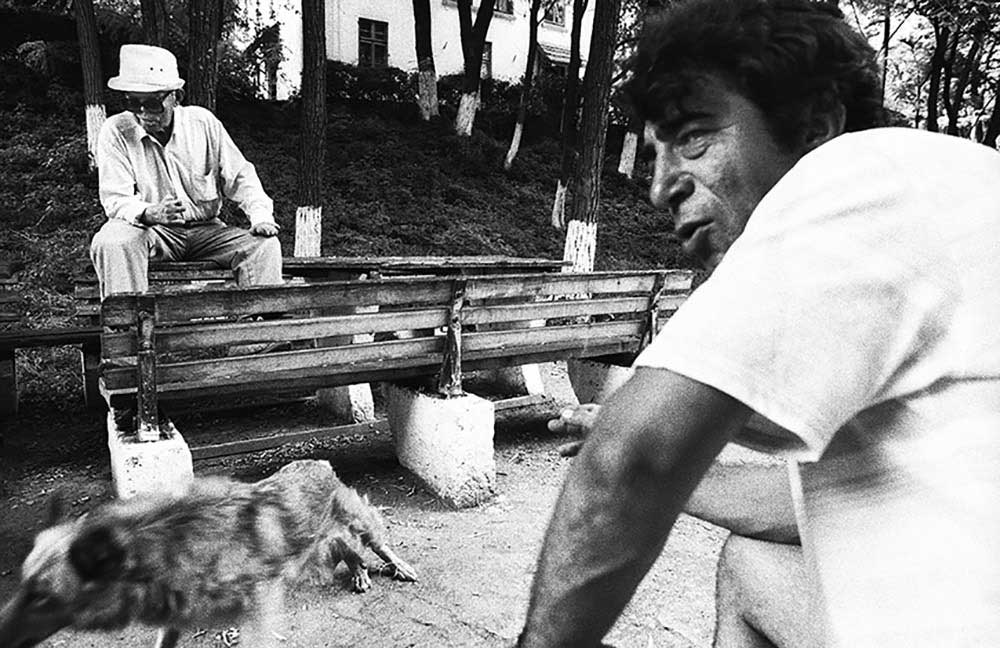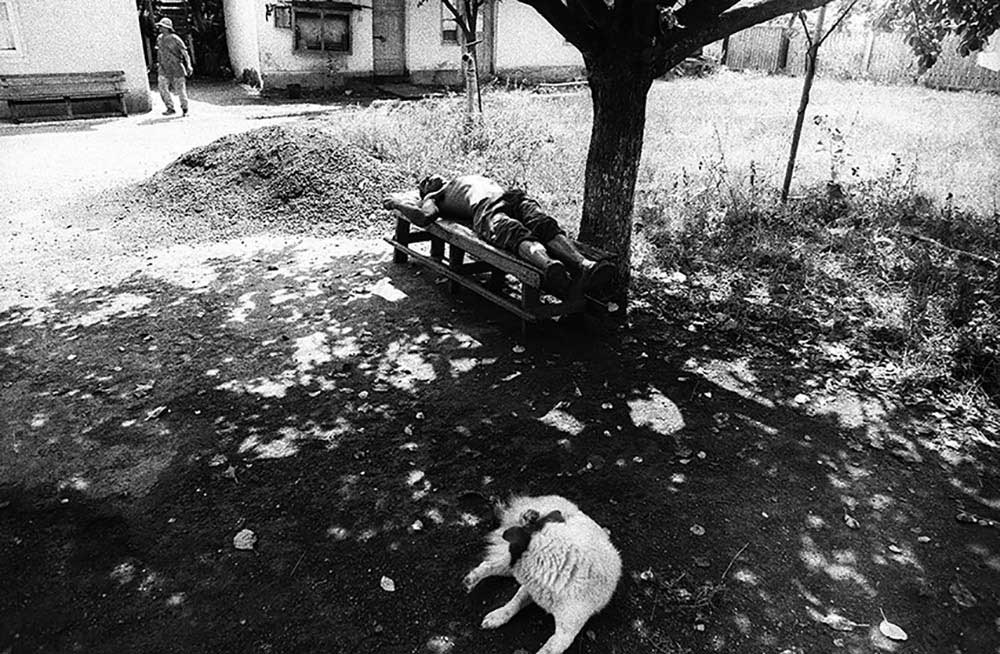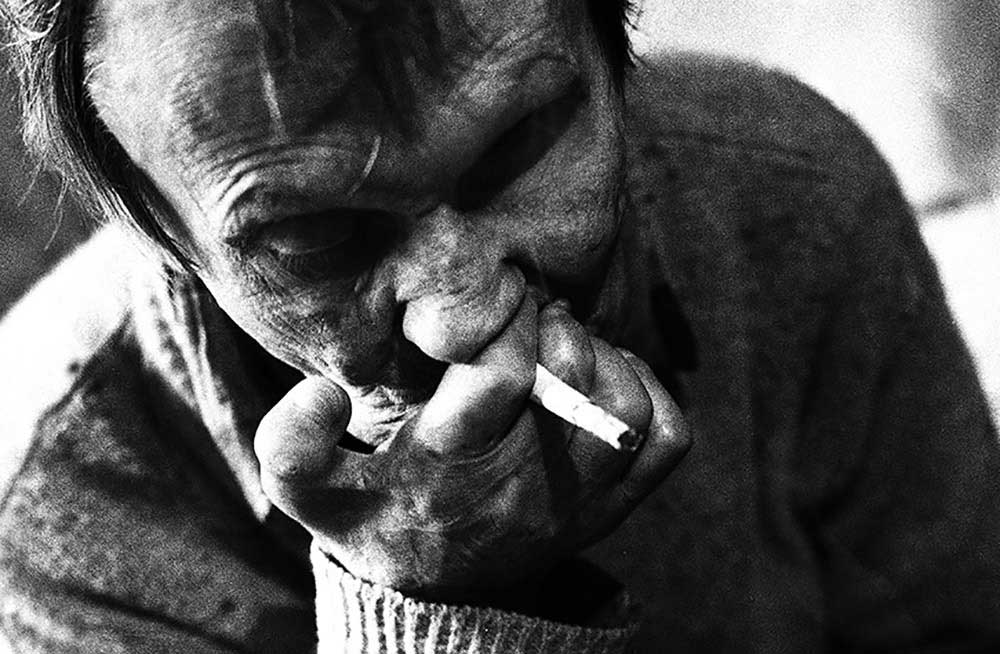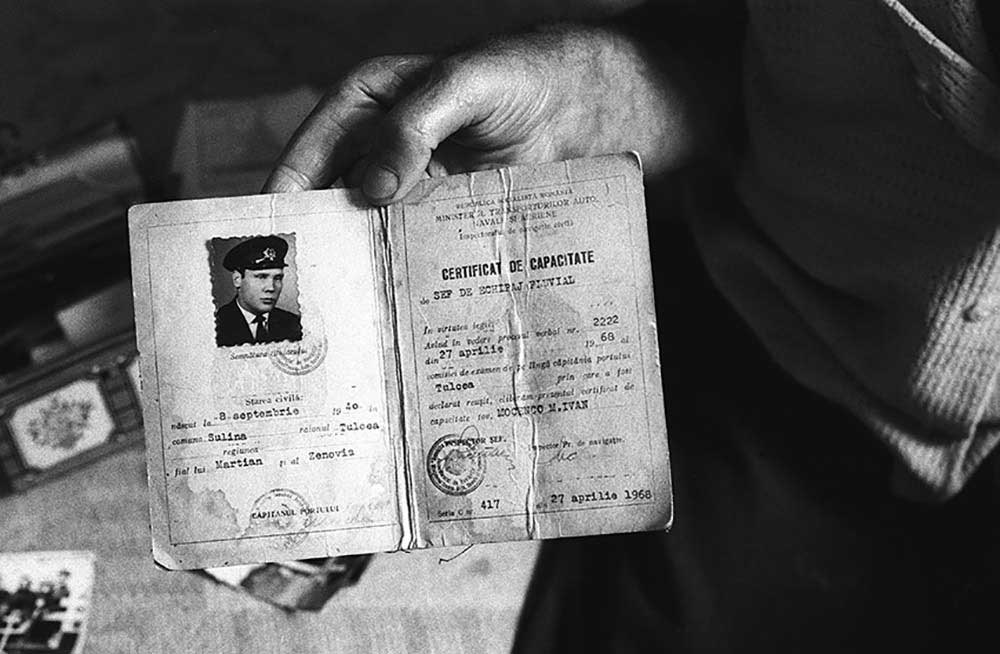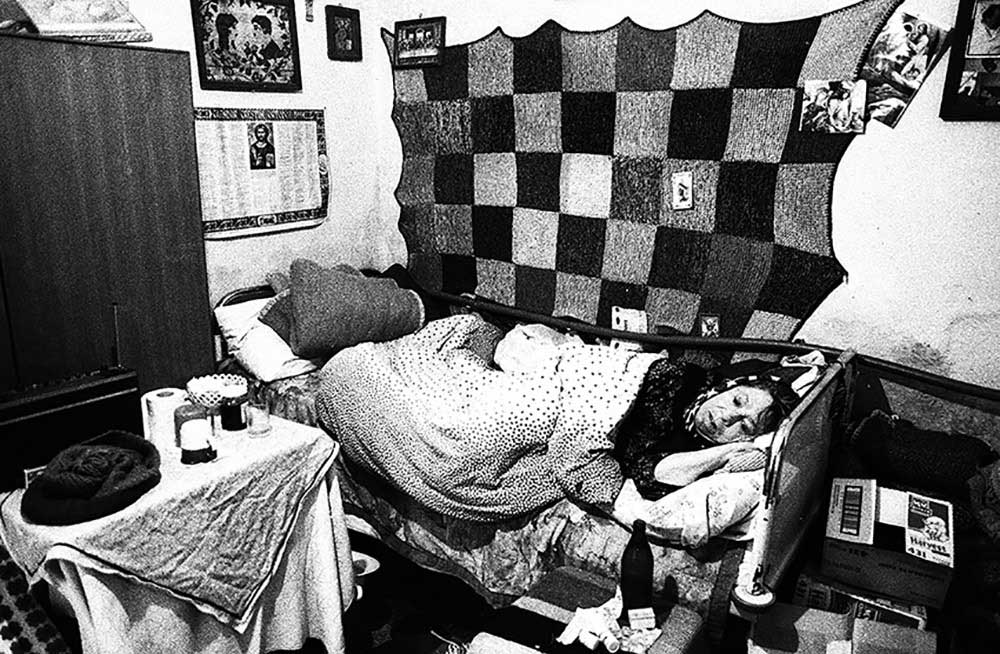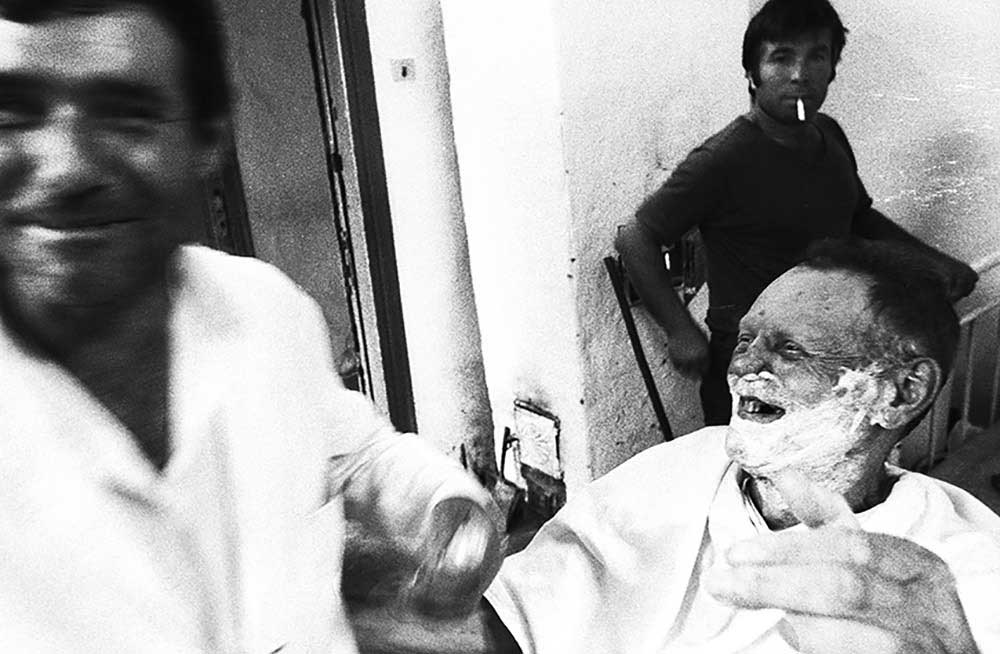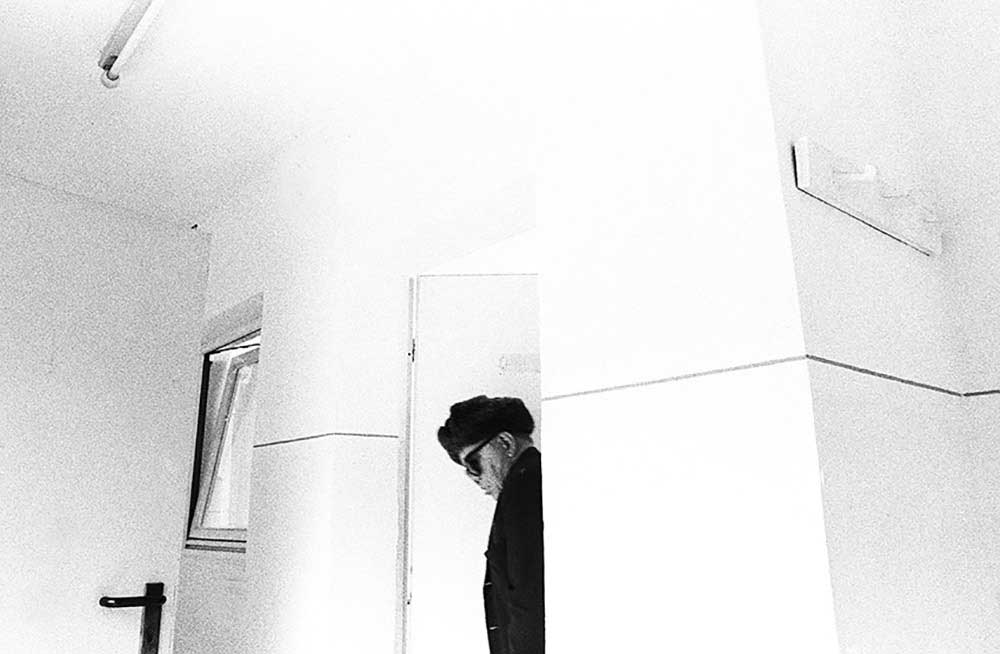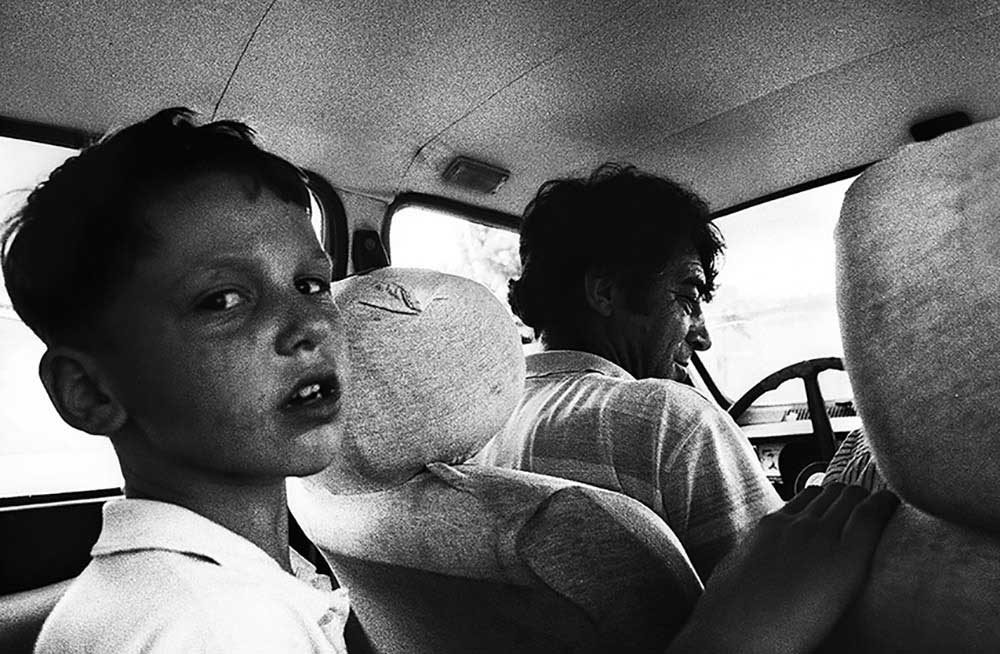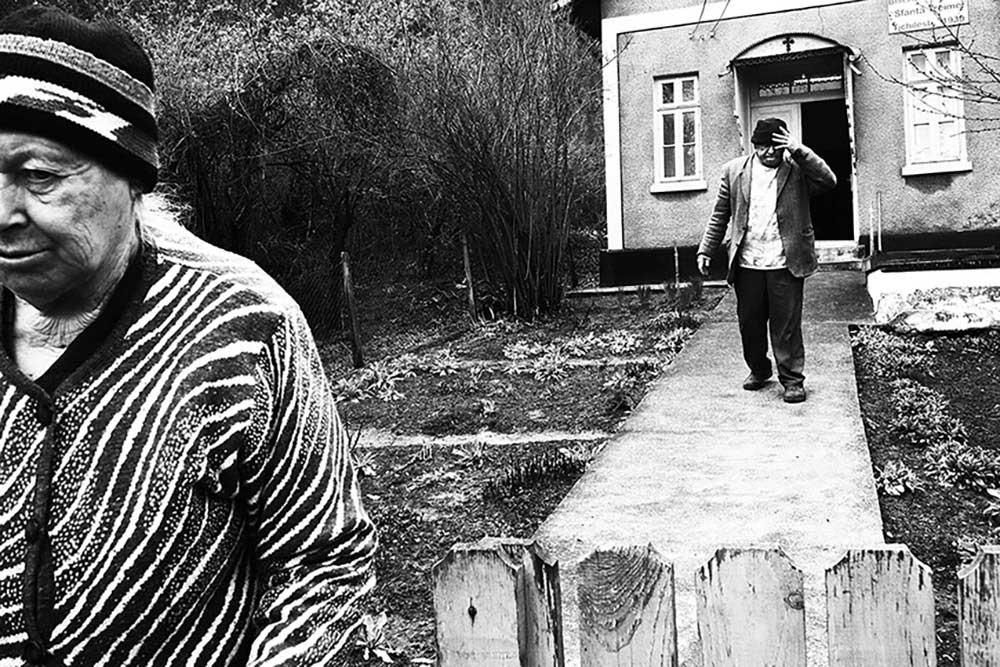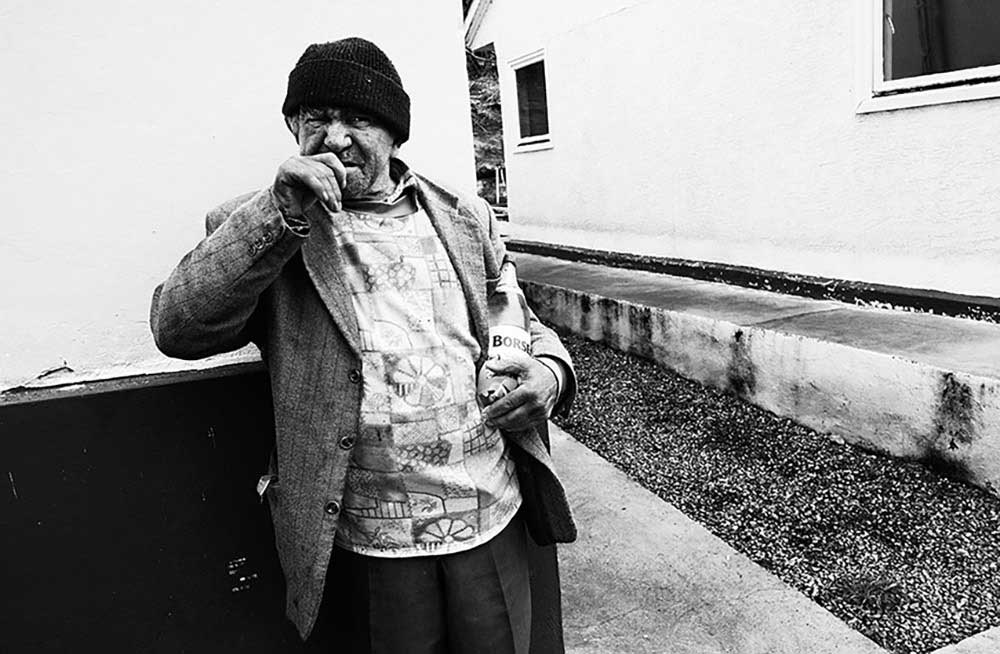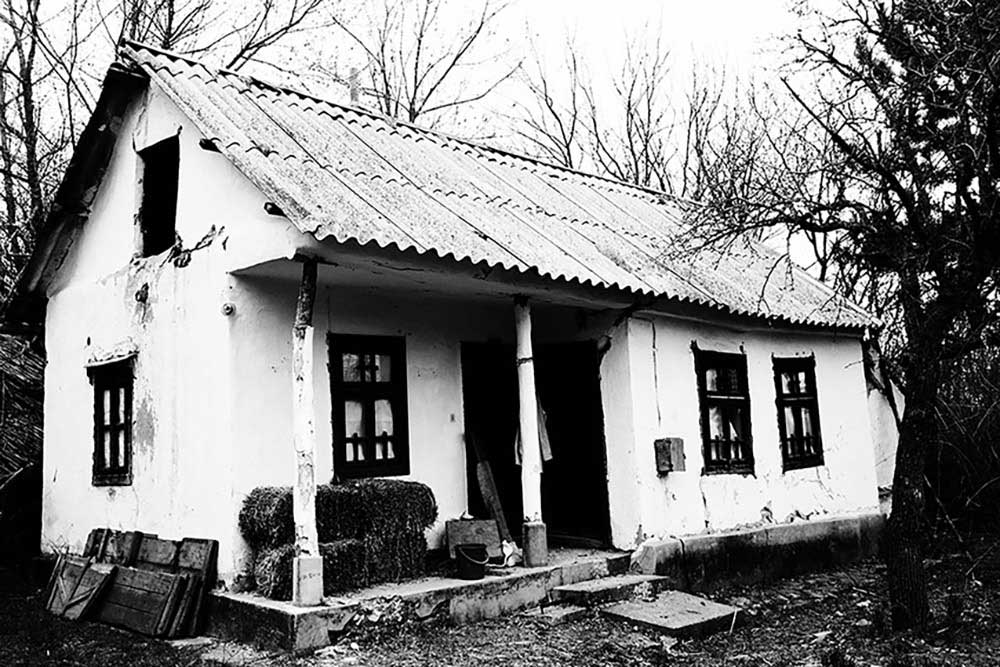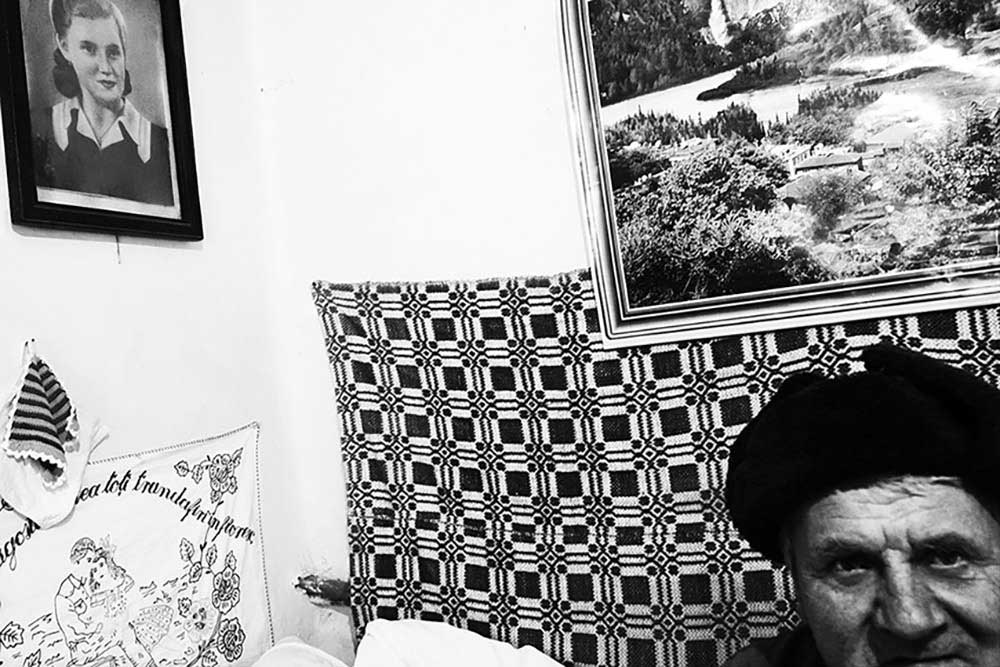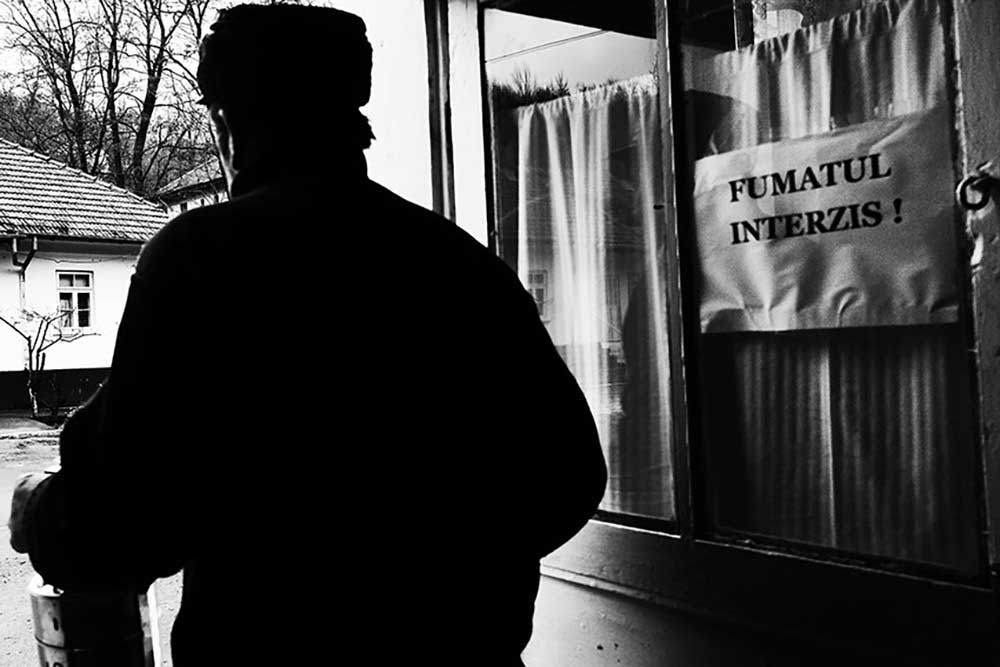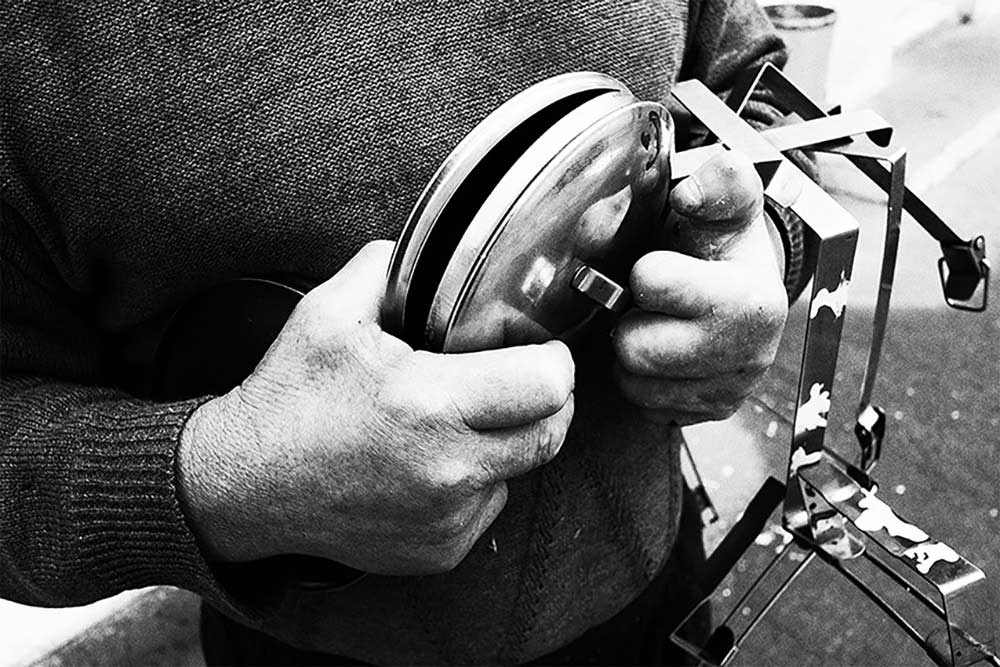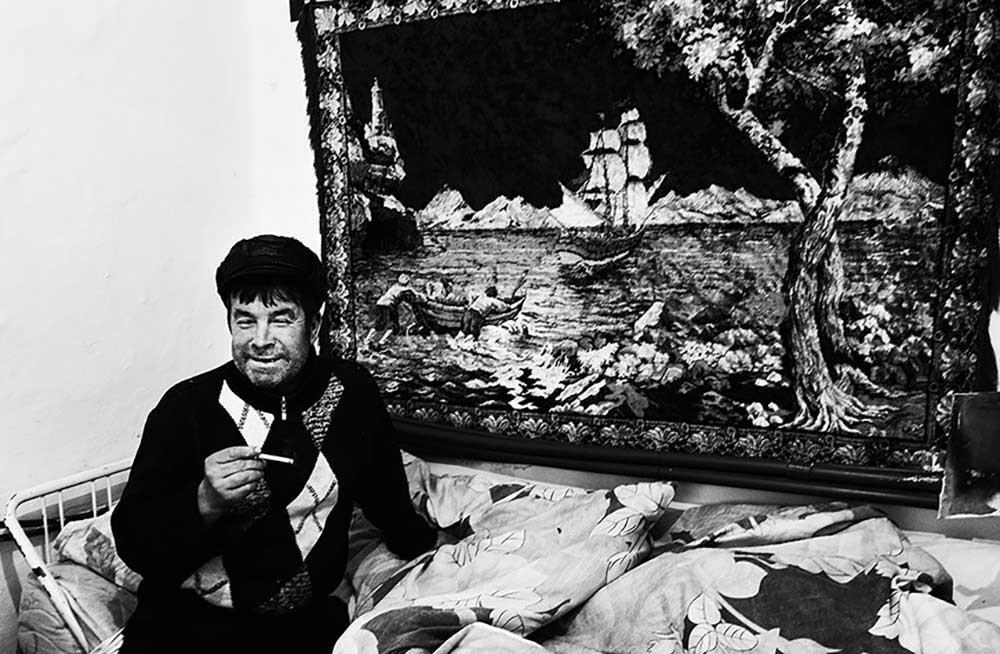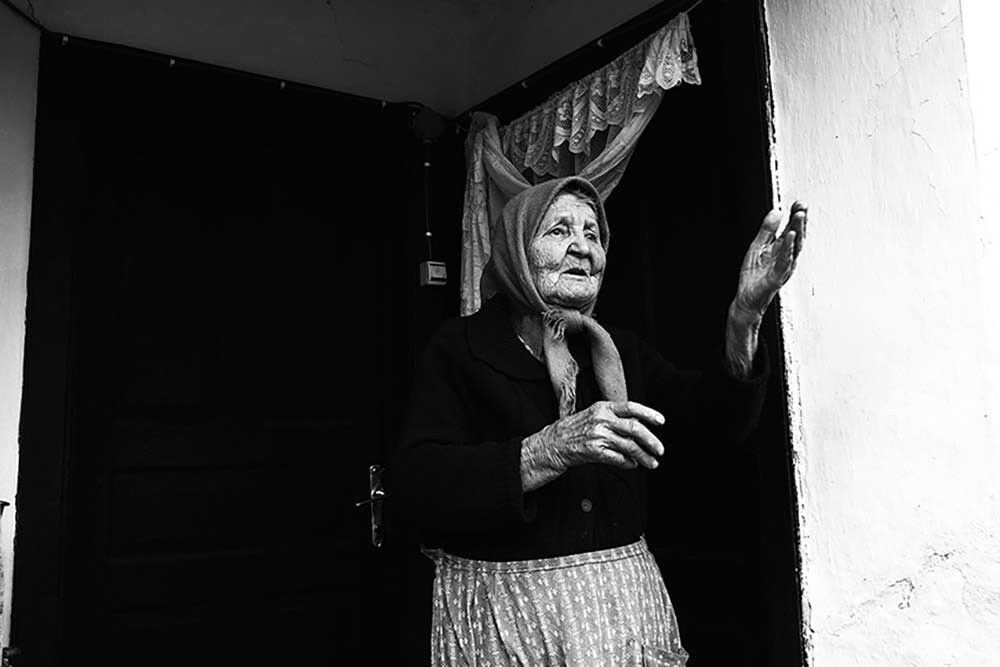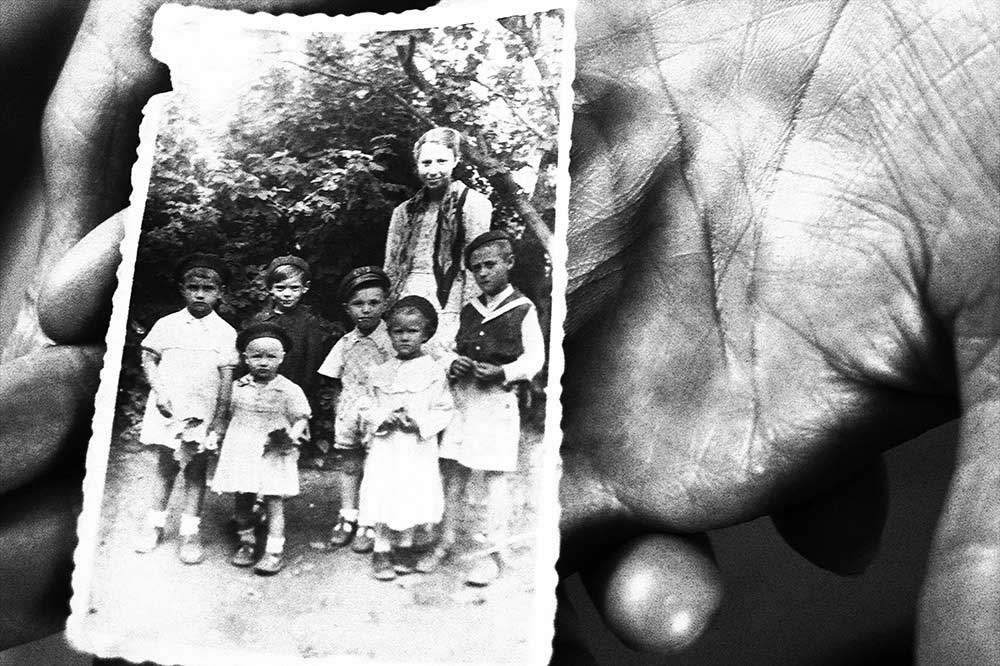In 1999 I took a path leading away from the main road that followed the Da- nube Delta. Passing through a gate, I found myself within a group of anachro- nistic buildings, attracted by the energy they seemed to emanate.
My rst encounters with these men and women “struck by divine vengeance” were also touched by this strange feeling of timelessness.
Most of the forty residents had lived here for several decades even when their illness had been detected, contained and treated in time. Now stable but marked in the esh, the patients have learnt to reconstruct a social life In near self-suf ciency, living for the most part in 10m2 dwellings whilst respec- ting each other’s privacy.
Despite their imposed rootlessness, they exhibit an extraordinary humanity, a humanity that persuaded me to return to them following this rst encounter.Sixteen years later, scienti c and social progress have not followed the same path. Healthcare, death and inactivity are daily realities but the on-site medical team though currently at a minimum constitutes their link to social life.
Pasha, Imma and Grisha don’t differentiate between hope, disillusion and sa- tisfaction for this situation which is nonetheless proclaimed by various national media as being almost eradicated.They all downplay this forced itinerary, they have violent memories of desocia- lisation that they associate with life on the outside. Some know the joys of a reconstructed family life thanks to the birth of rela- tionships that herald new beginnings outside the community. Several maintain links to the outside world via visiting volunteers and even the rare farmer of adjoining lands who has learnt to accept their presence, their existence.These fourteen remaining residents are intimately attached to this village that they erected and none mean to abandon this land whose future is uncertain due to budgetary restrictions and the deaths of these patients struck by “divine vengeance”.
About Gilles Mercier
Gilles Mercier is self-taught and committed to the medium of photography and to the Lumen Collective. Having decided upon this path, he moved to Paris to complete his formal technical training with the Iris Centre. A collaborator with several collectives including SyncroX, as well as foundations such as the Raoul Follereau Foundation, Gilles Mercier currently works on multiple institutional orders and as the photographic assistant to AC Barbier. Following diverse photographic exhibitions, it was his work in reportage that directed him towards social action. Currently director of a social housing unit, he is reinvesting in his medium. [Official Website]



